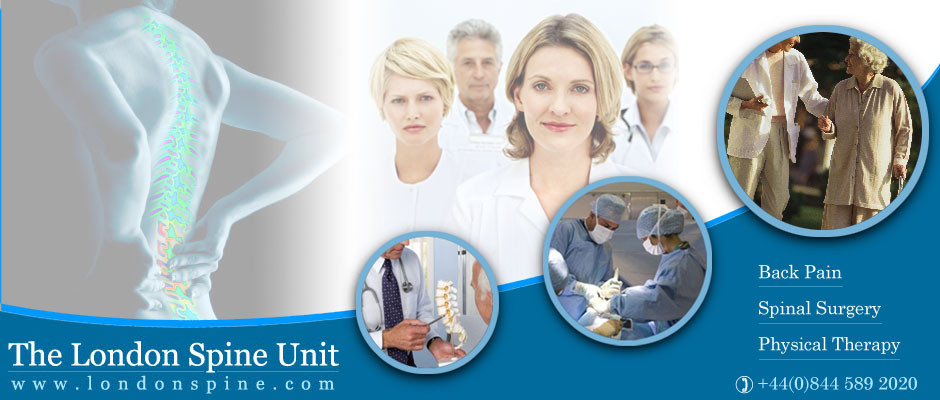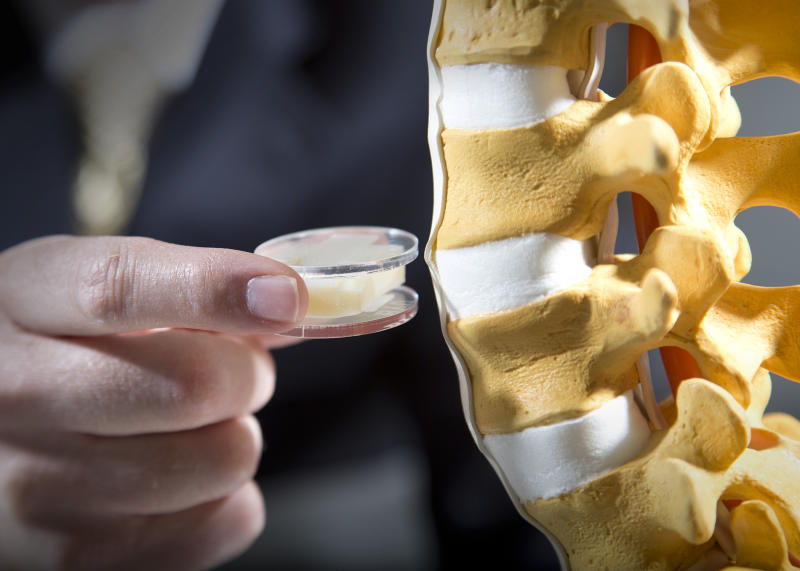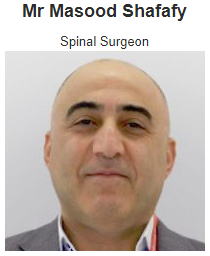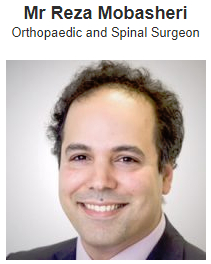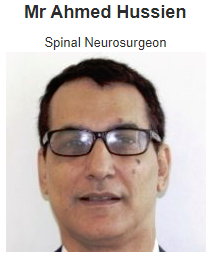The spine consists of bones, discs, muscles and ligaments. The bones, called vertebrae, provide the structure of the spine, while the muscles and ligaments provide the support base. The discs, located between the vertebrae, function as shock absorbers and also influence the flexibility and mobility of the spine. Each intervertebral disc consists of two parts:
-The nucleus pulposus: inner gelatinous part.
-The fibrous ring: strong and fibrous outer ring that surrounds and supports the nucleus pulposus.
When the discs are compressed or damaged due to age, genetics and daily weathering, the material of the nucleus pulposus can leave the annulus fibrosus and compress the vertebral nerves or the spinal cord, causing pain. The natural discs can also become extremely dislocated or herniate, causing neurological symptoms in the neck, lower back and upper or lower limbs.
When non-surgical options fail to alleviate the symptoms of an acute herniated disc and/or degenerative disc disease (DDD), your doctor may recommend spinal surgery. The objective of the surgery is to partially or totally remove a damaged disc (discectomy), relieve pressure on the nerves and/or the spinal cord (decompression) and restore stability and vertebral alignment after the removal of the disc.
Traditionally, spinal fusion has been the model to follow for the surgical treatment of herniated disc or DDD. With the use of bone grafts and instruments such as metal plates and screws, this procedure fuses or creates a joint between two adjacent vertebrae to perfectly stabilize the segment and provide relief. This procedure has been successful in many patients; however, a possible disadvantage associated with spinal fusion is the loss of movement and flexibility in the treated vertebral segment.
As an alternative to spinal fusion, your doctor may recommend a surgical procedure called disc replacement which involves the implantation of an artificial disc. It is a joint replacement procedure, or arthroplasty, that involves the insertion of an artificial disc into the intervertebral space after the removal of a natural cervical or lumbar disc. The device is designed to preserve mobility within the intervertebral space and throughout the treated vertebral segment. It is designed to function as a joint, reproducing the physiological movement (flexion, extension, lateral inflection and rotation) and the alignment (height and curvature) of a natural disc.
Disc replacement surgery can be performed in the lumbar spine or Cervical spine. For cervical spine disc problems, the results of cervical disc replacement are better than lumbar disc replacement. This is due to the different mechanical loads in the different regions of the spine. The lumbar spine has much more load and stress. Artificial implants are more likley to loosen, wear or move out of position in the lumbar spine. The surgery is also more complicated in the lumbar spine than cervical spine.
Disc replacement surgery involves replacing degenerate worn disc with artificial metal or plastic substitutes that can provide painless movement.
The London Spine Unit specialises in Disc replacement surgery and our specialists will be able to give you the best choices.


